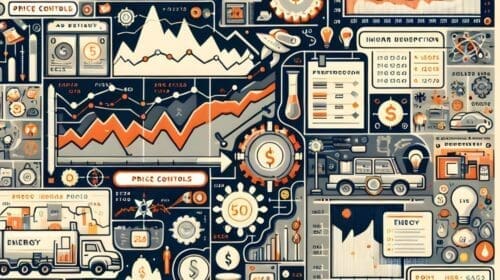Demand for petroleum products continues to expand into the Memorial Day holiday sending gasoline prices over the $3-per-gallon mark for the first time in seven years.
AAA said the average retail price in the U.S. was $3.03 on May 26 up from $1.96 last year during the height of the economic slowdown caused by the coronavirus. The average price in Texas was $2.732 this week compared to $1.62 last year.
Crude oil, the main expense in gasoline, has increased to $66 per barrel this week, which is up $32 from a year ago. Crude oil inventories have been on a steady decline since June 2020 when inventories reached a record 540 million barrels. This week, inventories declined another 1 million barrels to 484 million, according to the Energy Information Administration (EIA).
AAA expects more than 37 million people to take trips this Memorial Day weekend, traveling 50 miles or more from home between May 27 and May 31. This total marks a 60 percent increase from 2020, when 23 million people traveled, the fewest since AAA began recording in 2000.
Although AAA expects substantially more travel this Memorial Day than in 2020, its estimate is still about 6 million fewer drivers than in 2019.
“In the week before Memorial Day 2020, gasoline demand was 7.0 million barrels per day (b/d), compared with an average of 9.5 million b/d for the same week for 2015–2019,” EIA reported. “The four-week average demand for gasoline increased 13 percent between the end of February 2021 and the end of April 2021. As of May 21, weekly demand of total motor gasoline was 9.5 million b/d, up 2.5 million b/d compared with the four-week average from the same time last year.”
Gasoline demand remains 37,000 b/d below the 2015–19 seasonal average, according to EIA
EIA said the increase in vaccinations and the gradual recovery in overall U.S. economic activity since the beginning of 2021 contributed to increasing gasoline demand going into the summer.
Refinery and pipeline disruptions in recent months have contributed to upward pressure on retail gasoline prices. The unexpected closure of Colonial Pipeline in early May further contributed to reductions in regional gasoline inventories along the East Coast, the largest U.S. gasoline market. Fuel shortages at retail stations and at terminals that normally rely on the pipeline increased regional gasoline prices while also preventing Gulf Coast refiners from increasing production to supply East Coast demand, EIA said.
A mixture of higher oil prices along with rising demand coupled with a reduction in supplies is a scenario for an increase in price.
Alex Mills is the former President of the Texas Alliance of Energy Producers.
Alex Mills is the former President of the Texas Alliance of Energy Producers. The Alliance is the largest state oil and gas associations in the nation with more than 3,000 members in 305 cities and 28 states.
Oil and gas operations are commonly found in remote locations far from company headquarters. Now, it's possible to monitor pump operations, collate and analyze seismic data, and track employees around the world from almost anywhere. Whether employees are in the office or in the field, the internet and related applications enable a greater multidirectional flow of information – and control – than ever before.










